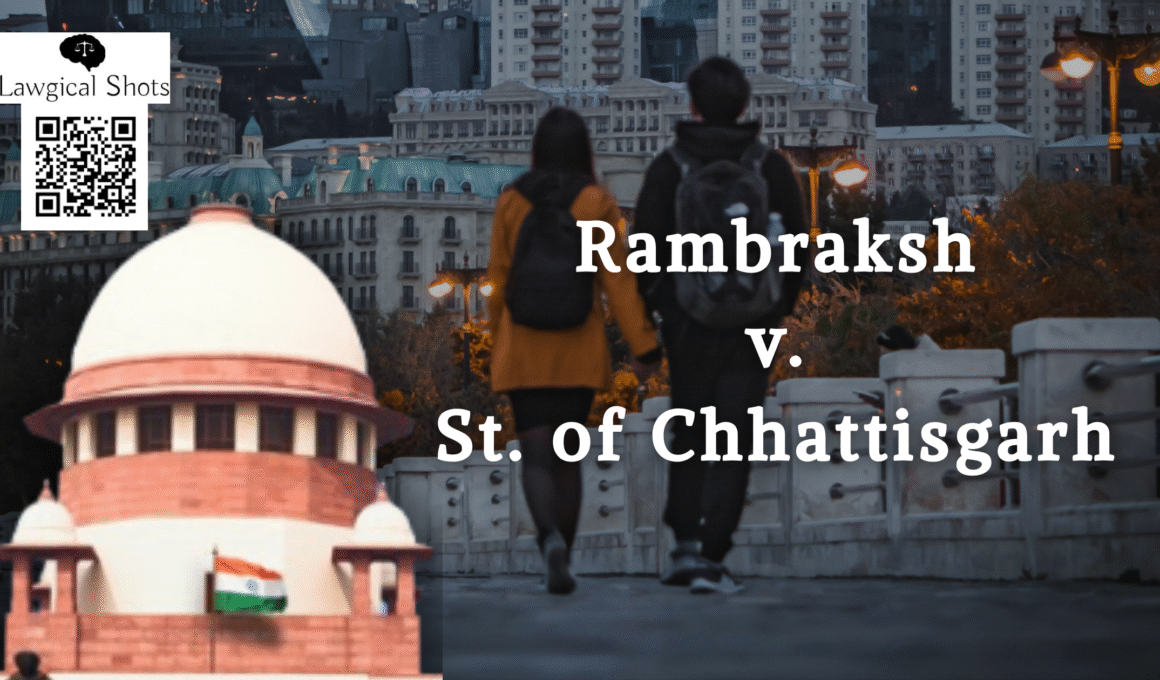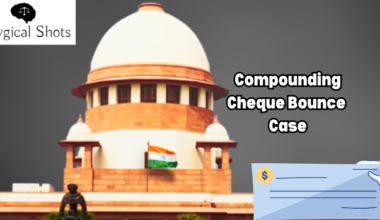Court: Supreme Court of India
Judges: Justice Jagdish Singh Khehar and Justice C. Nagappan
Appellant: Rambraksh @ Jalim
Respondent: State of Chhattisgarh
Date of Judgment: 12 May 2016
Citation: Criminal Appeal No. 462 of 2016
Introduction
This case talks about how courts should deal with cases based only on indirect (circumstantial) evidence. The main question was, can a person be convicted just because they were last seen with the deceased? Through this case, the Supreme Court addressed the legal limits of the “last seen” theory and reminded us that criminal justice demands much more than suspicion.
Introduction to the Applicable Laws
The case involves three primary sections of the Indian Penal Code:
- Section 302 IPC
- Section 34 IPC
- Section 201 IPC
The appellant was convicted under these provisions based on the prosecution’s theory that he had murdered one Ramsevak and tried to dispose of the body. The central legal issue revolved around whether the circumstantial evidence, particularly the “last seen” circumstance, could be enough to sustain such a conviction.
Factual Background Rambraksh v. State of Chhattisgarh
The accused had gone to the house of the deceased, and asked him to accompany him to Ambikapur. Though the deceased initially declined, the appellant returned with another accused later that night. Around 11:00 p.m., the deceased left with both accused and never returned.
A week later, on 14th October 1992, deceased’s son informed his mother, that he had found his father’s torn clothes and shoes in a field. On visiting the spot, his mother noticed birds circling nearby and discovered scattered skeletal remains, which she believed belonged to her husband. The complaint was recorded at Chandni Police Station and formed the basis of the investigation.
The police recovered various items, including a bamboo stick, bloodstained and plain soil, and human bones like the skull, mandible, ribs, and leg bones. A Doctor documented the skeleton parts in detail, and a second medical expert confirmed that the remains were human, male, aged between 25 and 40, with no visible injuries. However, he could not determine the cause of death.
The accused were arrested, and certain items were recovered following their alleged disclosure statements. The trial resulted in the acquittal of first accused but the conviction of the other, which the High Court later upheld. The appellant then moved to the Supreme Court.
Arguments
The appellant’s counsel strongly challenged the conviction on multiple grounds:
- There was a 7-day gap between the last time deceased was seen and the discovery of his remains, making the “last seen” theory unreliable.
- The identity of the skeleton was never scientifically verified to be that of deceased, and there was no DNA analysis to support the claim.
- That deceased’s wife changed her story in court by claiming she witnessed the assault, even though she hadn’t mentioned it in her initial statement or FIR.
- There was an unexplained delay in lodging the complaint and registering the FIR.
- On the other hand, the State counsel maintained that the appellant took the deceased away, and in the absence of any explanation about what happened thereafter, the trial court rightly drew an inference of guilt.
Legal Analysis by the Court
The Supreme Court carefully examined the evidence on record and highlighted that the prosecution’s case rested entirely on circumstantial evidence. The key witness, deceased’s wife, had made material improvements in her testimony; her original police statement did not mention witnessing anything, whereas her deposition in court claimed she saw her husband being assaulted with lathi. The Court refused to rely on this changed version.
The Court also emphasized that:
- The bones were not recovered based on any disclosure by the accused.
- The prosecution failed to identify the body conclusively or prove homicidal death.
- There was a complete lack of medical evidence to support the murder charge.
- The delay of 7 days in reporting the matter was never explained.
- The “last seen” theory by itself was insufficient, especially with a time gap of one week.
Referring to earlier judgments like Krishnan v. State of Tamil Nadu, Bodhraj v. State of J&K, and Jaswant Gir v. State of Punjab, the Court reiterated that being last seen with the deceased cannot, on its own, justify a conviction without a complete chain of reliable and unbroken evidence.
Rambraksh v. State of Chhattisgarh Judgment
The Supreme Court found serious gaps in the prosecution’s case and held that the conviction was legally unsustainable. It set aside the conviction and sentence of the appellant under Sections 302/34 and 201 IPC. The appellant was ordered to be released immediately, unless required in any other case.
Conclusion
This judgment shows that a strong chain of evidence is necessary for conviction. Being “last seen” with someone is not enough unless supported by other proof. If there is a delay, unclear identity, and weak witness statements, the benefit of the doubt must go to the accused. This case is a powerful affirmation of the idea that justice cannot rely on shortcuts; only on proof beyond a reasonable doubt.
The case of Rambraksh vs State of Chhattisgarh has been analysed by our intern, Ms. Pari Mirani. She has been assisting the team in bringing informational legal blogs.








